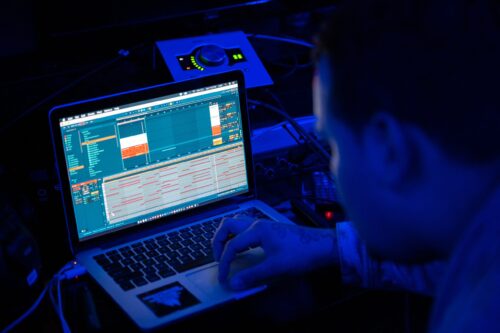Corrosion as a Real-time Process Variable
Corrosion evaluation methods used by expert corrosion engineers often involve analysis of sacrificial samples (coupons) placed in the pipeline. These samples are precisely weighed prior to exposure to the process media, analyzed for metal loss and other imperfections, and serve as the basis for determining general and localized corrosion rates for the process.
AT A GLANCE
4-20mA tells status
Info between sample points
Corrosion tutorial
Sidebars: Corrosion monitoring advances Corrosion basics
Corrosion evaluation methods used by expert corrosion engineers often involve analysis of sacrificial samples (coupons) placed in the pipeline. These samples are precisely weighed prior to exposure to the process media, analyzed for metal loss and other imperfections, and serve as the basis for determining general and localized corrosion rates for the process. Additional coupons located at other locations result in larger amounts of data for evaluation and a more accurate corrosion picture for the facility.Available corrosion evaluation tools give the corrosion expert highly detailed data for determining corrosion rates, but that information is only useful to the specialist—not the facility operator or control systems engineer. Corrosion transmitter technology is changing that.These transmitters contain state-of-the-art, patented algorithms and data analysis techniques that accurately measure corrosion rate and localized corrosion (pitting). Harmonic distortion analysis (HDA) is applied to improve the performance of industry accepted linear polarization resistance (LPR) technique used to measure corrosion rate. To further enhance performance, an application-specific Stern Geary value (B-value) can be stored in the transmitter and adjusted to more accurately represent the actual pipe and material used in the process.
Actual conditions of the process could be drastically different than the off-line information displayed..
During a measurement cycle, corrosion transmitters perform a unique electrochemical noise (ECN) measurement that, in combination with the corrosion rate data, provides a measurement of pitting. At the completion of each measurement cycle, the respective corrosion rate (or pitting value) is calculated and made available to plant personnel in a 4-20 mA signal.LPR technique has long been the industry standard for general corrosion monitoring and is based on the Stern-Geary relationship. This B-value relationship correlates the potential excitations with the measured corrosion current to produce a measurement of polarization resistance. This resistance is then used to determine the general corrosion rate. Since it is critical to use the correct B-value in this method, it is generally considered unreliable by itself as a measurement technique for general corrosion rate. HDA analysis is based on an evolution of the LPR technique. By applying a low frequency sine wave to the measurement current, the resistance of the corrosive solution can be calculated through a harmonic analysis of the resulting signals. With both the polarization resistance and the solution resistance, a more accurate general corrosion rate can be determined.Finally, the ECN method allows the localized corrosion rate to be calculated. ECN is the measurement of spontaneous fluctuations generated at the corroding metal-solution interface. This measurement is only possible in a three-electrode probe configuration and is used to determine the existence of localized corrosion.
Real-time corrosion monitoring
Using a 4-20 mA control signal allows the facilities operator to interpret the corrosion status in real time. The operator can evaluate historical corrosion rates to current rates and quickly determine changes in water quality, chemical changes, and inhibitor performance. All of these situations can affect pipeline corrosion and each can be more efficiently monitored and controlled with the help of a real-time corrosion monitoring system. Furthermore, the plant operator using such a system can plan for replacement of suspect equipment as part of a predictive maintenance schedule.
Corrosion transmitter technology has advanced to allow general and localized corrosion to be monitored online and in real-time, rather than in a historical “after-the-fact” method that misses the possibility of a process-corrosion correlation. Rather than determining corrosion occurrence over a period of time using a coupon analysis technique, corrosion can now be monitored like any other process variable (such as pressure, flow, level, temperature, pH) by the plant operator or control systems engineer using the existing human-machine interface.
Corrosion transmitter technology can find localized pitting, even when the general corrosion rate is low. This is critical since localized corrosion can be especially dangerous if not detected and neutralized at an early stage.
Online variables, such as pressure, level, and temperature, are extremely important to any process (see “Online vs. offline pressure and corrosion” graphic), so it is reasonable to imagine the need for on-line corrosion information as well. Dangers related to run-away reaction, over-flow conditions, or corroded pipes are too valuable to calculate off-line.
Specifications
Standard probes used for corrosion detection consist of three electrodes: two for measurement and one for reference. To get an accurate measurement, the electrodes must be made of the same material as the pipe or tank being monitored. Sacrificial electrodes are induced with a small signal and placed directly in the flow of corrosive media. These signals are monitored and analyzed by the transmitter over a period of seven minutes to get an accurate representation of corrosion.
Various types of mechanical probes are available for direct or remote mounting in fixed or adjustable lengths. Process media temperature can be as high as 250 °F (125 °C), while the transmitter can operate in an ambient temperature range of -20 to +158 °F (-28 to +70 °C). The material inside the tank or pipe also must be at least 1% water. Corrosion transmitters are engineered for installation in any industrial application from wastewater management to chemical processing to oil refining. If the area is considered non-hazardous (non-explosive), these transmitters can simply be connected to an analog input on a DCS or PLC and installed according to local, state, and national regulations.
For Division 2 applications, a low-power design allows mounting directly within a Division 2 hazardous location if corrosive material inside the pipe is non-flammable. In this configuration, the control signal (4-20 mA circuit) must be connected in accordance with the National Electrical Code according to Division 2 wiring methods.
Special designs can accommodate Division 1 applications. Intrinsically safe (IS) units require the use of an isolation barrier mounted between the I/O card and the transmitter. An IS barrier limits the energy into the Division 1 area and works with the transmitter to eliminate the potential of high energy that could ignite the hazardous location.
Author Information
David Hohenstein is department manager for Pepperl+Fuchs’ process automation group, Twinsburg, OH;
Corrosion monitoring advances
The corrosion process is based on a metal/alloy being immersed in an electrically conducting liquid where it will corrode through an electrochemical process. The following example shows a simple reaction of a metal (iron) dissolving in an acidic solution:
Fe Fe
2H 2
An anodic site is formed when metal from the surface of the corroding pipe or tank passes into the adjacent solution (the liquid causing the corrosion) by way of an ion (Fe corr .
Oxidizing agents in the corrosive solution then consume these excess electrons.
Anodic and cathodic points continuously shift position and exist within the entire conductive surface (metal). This random configuration makes direct measurement of I corr impossible. To overcome this limitation with corrosion transmitter technology, an electrical probe consisting of three measurement electrodes of the same metal is placed into the corrosive solution. Using this probe it is possible to apply small potentials between the electrodes and measure the resulting current. The same corrosion process responsible for I corr influences this current.
If electrodes are corroding at a high rate, metal ions (Fe corr . Similarly, if electrodes are corroding at a low rate with ions passing slowly into the solution, a small potential applied to the electrodes will produce a small current.
Using algorithms and data analysis, corrosion transmitters can interpret this corrosion information and make it available in a 4-20 mA signal.
Corrosion basics
What is corrosion?
Corrosion is a chemical deterioration of a material, usually a metal, because of the reaction with the environment.
Where does corrosion occur?
Corrosion can normally occur, but is not limited to:
Cooling water systems;
Secondary recovery systems;
Potable water treatment and distribution systems;
Wastewater treatment;
Pulp and paper manufacturing;
Hydrocarbon production with free water.
What is an anode?
Electrode at which oxidation or corrosion occurs (corroding electrode).
What is a cathode?
It is the opposite of anode. Electrode where reduction (and practically no corrosion) occurs.
What is pitting?
Highly localized corrosion resulting in deep penetration at only a few spots.
What is “coupon” analysis?
Traditional technology used to monitor corrosion involves the use of pieces of metal called coupons. These pieces of metal are weighed prior to being placed in the process. After a period of time, they are removed to see how much weight loss has occurred, and analyzed to determine the type of corrosion. From this analysis, corrosion rates are determined, to estimate how much inhibitor to be used to help avoid future corrosion.
Do you have experience and expertise with the topics mentioned in this content? You should consider contributing to our CFE Media editorial team and getting the recognition you and your company deserve. Click here to start this process.





